Build a Shaker Lap Desk
Celebrate pen and ink with this quintessential case.

The classic Shaker lap desk, designed two centuries ago to function as a miniature traveling office, was the laptop of its time. With room for paper, envelopes, pens, and a small inkwell drawer, it speaks of an era when pen and ink were king. These desks continue to draw attention in the digital age for their precise joinery and elegant practicality, and of course you can still use one for writing while sitting in an easy chair. But the old design has kept pace with technology: Open the lid and remove the center divider and you’ll find space for your laptop; you can coil up power cords in the pencil till, and ear buds and thumb drives find a snug spot in the inkwell drawer.
Made in white pine like the original and sporting exposed dove-tails, breadboard ends with cherry pegs, and an unusual little drawer, this piece is fun to make, a pleasure to use, and sure to spark many a conversation.
Start with the carcase
Before cutting the dovetails for the case, mill the parts to 3⁄8 in. thick, taper the sides, and make the cutout in the right side for the drawer. Now cut the through-dovetails using your normal approach (for my tails-first method for hand-cutting dovetails, see FWW #238 and #239). The only wrinkle is at the back right corner, where the cutout for the drawer leaves space for just two tails. Cutting them is straightforward, but you’ll need to take care at assembly. That corner will be more vulnerable than the others until the bottom is in place.
After cutting the carcase dovetails, cut the dadoes for the dividers. The removable center divider drops into through-dadoes in the front and back of the case. The L-shaped divider gets glued into a through-dado in the front and a stopped rabbet just beside the drawer cutout. I cut the through-dadoes with a dado set on the tablesaw, and I cut the rabbet with a router, cleaning it up with a chisel.
Get to the bottom of it
Once the carcase is glued and sanded, attach the bottom. Rather than being set in a groove, the bottom is simply face-glued to the bottom of the case, adding great rigidity. To deal with this sort of cross-grain glue-up without cracking, the bottom must be made of quarter–sawn white pine—the most well-behaved wood in North America. Through the seasons that 12-in.-wide bottom will move less than 3⁄64 in., well below the elastic limit of the wood and glue. Trust me, it works—or trust the Shakers, since the desks they built this way are still holding up fine.
The bottom extends 3⁄8 in. beyond the case and has a quarter-round profile on all four edges. After routing the roundovers I carefully center the case on the bot-tom and use painter’s tape to mark its location. Then I apply glue to the bottom edges of the case and use two large spring clamps to hold it while I check the diagonal dimensions for squareness. That done, I add the rest of the clamps and let it dry.
By the way, even when I make this desk out of cherry I use quartersawn white pine for the bottom. I cut the bottom flush with the outside of the case and cover the pine with cherry quarter-round molding.
Dividers come next
Both dividers get a deep curved cutout. Cut the curves on the bandsaw and clean them up with hand tools and sandpaper. Both dividers are 3⁄8 in. thick, but the removable center divider should be face-sanded slightly thinner so that it’s easier to take out and put back.
The L-shaped divider creates a till for small items and provides one wall of the drawer pocket. Join the short and long legs of the L-divider with through-dovetails, being sure the legs are square. Then glue the divider in place, applying glue to its bottom edge and ends.
Make and fit the drawer
Now for the fun part: the tiny inkwell drawer, which has a double-length side that’s slotted for a
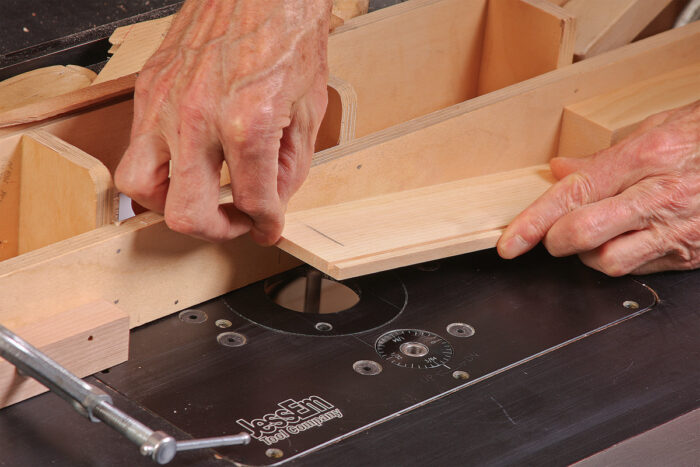
keeper, or stop. The drawer’s scale makes the joinery challenging. The smallest chisel in your arsenal will be required to cut these smallest of dovetails. But despite its delicate proportions, this drawer is anything but fragile.
A typical dovetailed drawer gets half-blind dovetails at the front and through-dovetails at the back. This drawer follows that pattern except at the back right corner, where the back is rabbeted to mate with a dado in the extralong right side. Before cutting the dovetails, cut the keeper slot at the router table. Then, at the tablesaw, cut the groove for the bottom and the dado for the back.
Once you’ve assembled the drawer, put it in place so the drawer front is flush with the outside of the case. Then put the keeper in the slot, push it up against the drawer back, and screw it into place. Pull the drawer open to be sure it extends fully. If not, you can make the slot a bit longer.
Stiffen the lid with breadboard ends
Finally, make the lid, a white pine panel with maple breadboard ends to keep it flat through the years. Start by making tongues on both ends of the panel. Using a dado head in the tablesaw, you can make the centered tongue in two passes, one from each face of the panel.
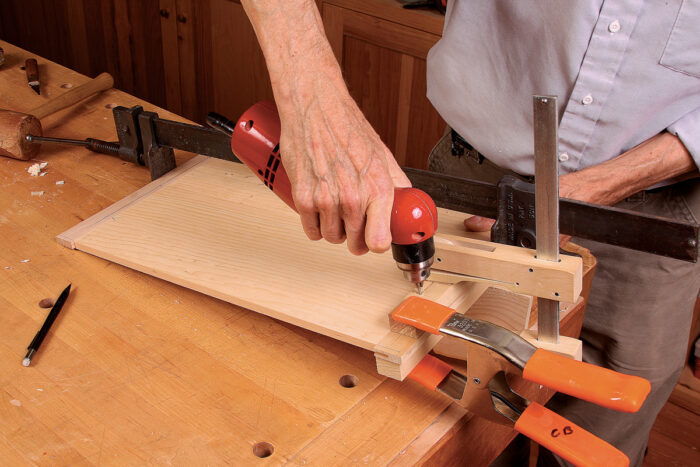
Now to the breadboards. Making stopped grooves in such small pieces by plunge-cutting can be dangerous, so I recommend cutting through-grooves and plugging the ends with small squares of the same stock.
After trimming the tongues to width, I’ll trim their faces with a rabbet plane if necessary. With the breadboards dry-fitted, drill for three pegs. Remove the breadboard and elongate the outer holes in the panel’s tongue. Then apply a dab of glue at the center of the tongue, re-clamp, being sure that the center holes align perfectly, and drive 1⁄8-in. cherry dowels through the holes.
After mounting the hinges and doing a final sanding to 220-grit, I oil the piece with Tried & True Varnish Oil. After a few days, when the first coat is dry, I polish with 0000 steel wool and apply two more coats a few days apart.
From Fine Woodworking #248
Download the plans for this table from the Digital Plans Library. Plus, browse 100+ other plans available for members only.
For the full article, download the PDF below.
Fine Woodworking Recommended Products

Compass

Stanley Powerlock 16-ft. tape measure



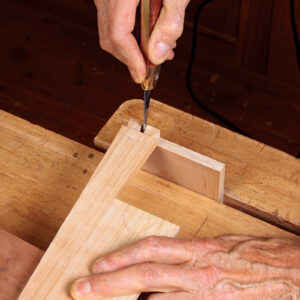
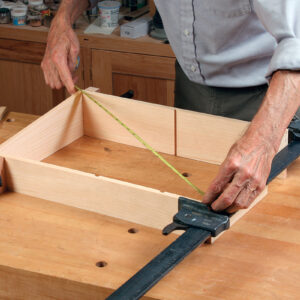
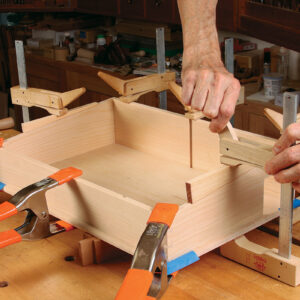
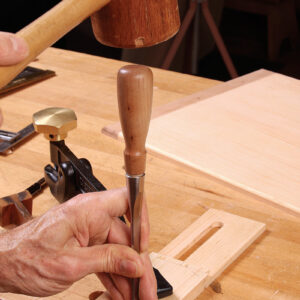
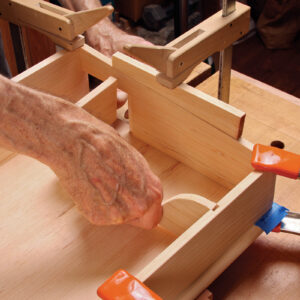
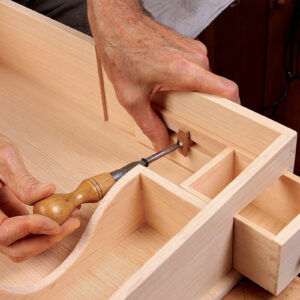






Log in or create an account to post a comment.
Sign up Log in